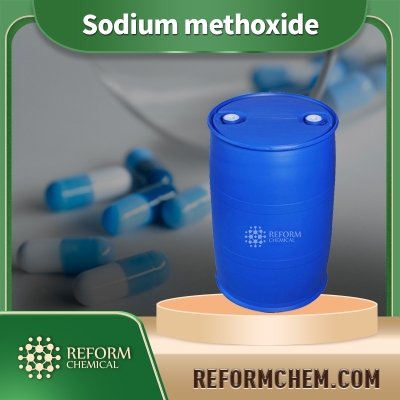-
Categories
-
Pharmaceutical Intermediates
-
Active Pharmaceutical Ingredients
-
Food Additives
- Industrial Coatings
- Agrochemicals
- Dyes and Pigments
- Surfactant
- Flavors and Fragrances
- Chemical Reagents
- Catalyst and Auxiliary
- Natural Products
- Inorganic Chemistry
-
Organic Chemistry
-
Biochemical Engineering
- Analytical Chemistry
-
Cosmetic Ingredient
- Water Treatment Chemical
-
Pharmaceutical Intermediates
Promotion
ECHEMI Mall
Wholesale
Weekly Price
Exhibition
News
-
Trade Service
[Kpler, a commodity market data analytics firm, said European crude deliveries from the U.
S.
rose more than 15 percent in May, the highest monthly pace on record
.
] However, this has added to tensions in the U.
S.
domestic fuel market, with oil prices in the U.
S.
Midwest refined oil inventories falling to their lowest level since December 2020 and U.
S
.
East Coast refined inventories falling to record lows, according to the U.
S.
Energy Information Administration (EIA).
]
[ Russia's flagship crude oil, the Urals, is currently trading about $30/b below the Brent benchmark price, providing a perfect reason
for energy importers not subject to sanctions orders to replenish inventories.
] ]
International oil prices hit an intraday high since March on Monday, and WTI crude oil futures touched an intraday high of $
120.
99.
After OPEC+'s decision to increase production last week, Saudi Arabia, OPEC's largest producer, decided to raise the price of crude oil exports in July, reinforcing expectations
for summer consumer demand in the northern hemisphere.
Tamas Varga, a senior market analyst at crude oil broker PVM Oil Associates, said in an interview with the first financial reporter that the main factors driving the rise in oil prices are optimistic demand and tight
supply.
In his view, with the start of the summer driving season in the United States and the control of the epidemic in China, the demand outlook has been significantly boosted, while the EU ban on Russian oil imports and OPEC+'s own actual production capacity factors point to supply-side difficulties
.
There are many signs that market fundamentals are tightening, and oil prices are expected to maintain a volatile upward pattern
in the short term.
Saudi Arabia's price hike has raised supply and demand concerns
Saudi Aramco said June 5 that it raised the July flagship Arabian Light crude to Asia's official selling price (OSP) premium to the average price premium of Oman and Dubai benchmarks to $6.
50, up from $
4.
40 in June.
The official selling price of Arabian Light crude destined for northwest Europe was raised to $4.
30 from $2.
10 previously
.
This follows OPEC+'s monthly ministerial meeting announcing that it will bring forward its September production increase, rising 50% month-on-month to 648,000 b/d over the next two months, hoping to reduce the impact
of Russian oil export restrictions on market supply.
A shift in attitude in Saudi Arabia has also been key to OPEC+ overruns this month, with Energy Minister Abdulaziz bin Salman saying earlier last month that OPEC+ should keep politics out
of its decision-making for the "common good" of stabilizing energy prices.
However, on the eve of the ministerial meeting, Saudi Arabia expressed its willingness to
increase production.
The analysis believes that in the case of US President Biden's repeated attempts to seek help and obstruction, Saudi Arabia's "move" provides an opportunity to ease relations between the two countries, after the two sides had differences
on issues such as the situation in Yemen.
The White House issued a statement praising Saudi Arabia's role as the OPEC+ chair in reaching an agreement to increase production, and Biden also plans to visit the Middle East
in the near future.
However, Saudi Arabia's decision to raise oil prices has made the market realize that with the arrival of summer in the northern hemisphere, market supply may struggle to keep up with the recovery in fuel demand
.
OPEC+ crude oil production fell to a six-month low of 41.
58 million b/d in April as Russian production hit by Western sanctions
, according to a S&P Global Platts survey.
That means the difference between OPEC+ real production and quotas rose to a record 2.
59 million b/d, with 13 of the 19 members struggling to meet output targets
.
Varga told the first financial reporter that Saudi Arabia's decision triggered a chain reaction, "market concerns have been ignited, as global oil demand recovers from the epidemic, OPEC+ production increase is still unable to meet demand, not enough to make up for the gap
caused by Russia's export restrictions.
" Considering that only a few countries, such as Saudi Arabia, the United Arab Emirates and Iraq, have spare capacity, he expects that the actual increase in production may be only about half of what was promised
.
Russia seeks a breakout
The Western coalition is working to limit the export of
Russian crude oil.
At last week's special EU summit, EU leaders reached a consensus in principle on the EU's sixth round of sanctions against Russia, including a "partial embargo"
on Russian oil.
At the same time, the EU will plan to ban insurance companies from insuring ships carrying Russian oil, a move aimed at stifling its access
to international oil markets.
Daniel Yergin, vice president of S&P Global, said: "If they ban insuring tankers carrying Russian oil, it will intensify the competition for oil, and it will be a turbulent summer
.
" "If you don't have insurance, most reputable tankers won't sail because the risk is huge
.
" Although insurance is not valued as much as oil barrels, it makes a lot
of sense.
”
Deputy Chairman of the Security Council of the Russian Federation Dmitry Medvedev said on social media on the 6th that the purpose of the EU is to destroy the Russian economy, but it is actually disrupting the world economy
.
The ban on insuring Russian oil carriers would lead to difficulties in transporting oil to third countries, but the problem could be solved
by concluding intergovernmental agreements with third countries and providing state guarantees.
Shipping data shows that Russia is looking for alternative buyers, and Asia is an important target
.
India is buying
aggressively due to record discounts.
Russia's flagship crude Urals crude is currently trading about $30/b below the benchmark price of Brent, providing a perfect reason
for energy importers not subject to sanctions orders to replenish their stocks.
Varga told First Financial Reporter that Russian oil exports are undergoing a large-scale restructuring
.
"First, as the EU embargo comes into effect, more Russian crude will be found elsewhere, and there is no guarantee that these increases will continue to be absorbed
by Asia.
In addition, Iran is fighting Russia to regain market share in the Asian region
.
He believes that the downside risks to Russian oil exports in the coming months are clear, and the real test is yet to come
.
According to shipping tracking company Vortexa, Russia's Urals crude oil offshore storage reached a record 62 million barrels at the end of May, and the road to finding a buyer remains tortuous
.
On the other hand, storage space in Russia itself is gradually decreasing, which may lead to producers being forced to stop production
.
According to production and export forecasts previously released by the Russian Ministry of Economy, oil production will fall by 9%
year-on-year this year under the "benchmark" scenario.
At the same time, the International Energy Agency (IEA) expects that after the implementation of the EU oil embargo, Russia's energy supply will be reduced by 3 million barrels, and inventory pressure may gradually appear
.
The United States is overwhelmed
As summer begins in the Northern Hemisphere, energy demand is rising
rapidly as travel demand recovers.
Fatih Birol, the head of the International Energy Agency, said last week that Russia is the cornerstone of the global energy system, and the Russia-Ukraine conflict and Western sanctions against Russia have made the world face a triple crisis
of oil, gas and electricity at the same time.
Birol believes that the current energy crisis will be larger and last longer
than the crisis of the 70s and 80s.
With the arrival of the summer season, there may be a fuel shortage crisis in the United States and Europe, and people will find a shortage of diesel, gasoline and kerosene at the same time
.
To compensate for the loss of Russian oil, the EU turned its attention to Africa
.
According to financial data service Refinitiv Eikon, 660,000 barrels of crude oil (mainly from Nigeria, Angola and Cameroon) arrived in northwest Europe
every day in May.
Driven by demand, the price of light sweet crude in Nigeria hit a record high, at one point a premium of more than $
7 over Brent.
South America becomes another alternative
.
Foreign media quoted people familiar with the matter as saying that Italy's Eni and Spain's Repsol may begin shipping Venezuelan oil to Europe as early as next month, resuming the oil-for-debt contract
that was stopped two years ago due to sanctions orders.
The United States is also ramping up supplies
to Europe.
Kpler, a commodity market data analytics firm, said European deliveries of crude imports from the United States rose more than 15 percent in May, the highest monthly pace on record
.
However, this has added to tensions in the U.
S.
domestic fuel market, with oil prices in the U.
S.
Midwest refined oil inventories falling to their lowest level since December 2020 and U.
S
.
East Coast refined inventories falling to record lows, according to the U.
S.
Energy Information Administration (EIA).
U.
S.
retail gasoline prices hit another record high
on Monday, according to the American Automobile Association (AAA).
In order to reduce the impact of energy prices on people's lives, the US government is considering measures such as restricting exports, relaxing environmental requirements for refined oil products, and taxing the oil and gas industry
.
Varga told the first financial reporter that because inflation is at a nearly 40-year high, Biden hopes to control oil prices as soon as possible and save the current unfavorable mid-term election situation, so he seeks dialogue
with Saudi Arabia and Venezuela.
But the real problem now lies in refinery capacity, which has pushed gasoline crack spreads to all-time highs above $40
.
Worldwide, refining capacity shortages are widespread
.
Saudi Arabia's Crown Prince Salman said last month that underinvestment in global refining capacity was one of the key drivers of
higher gasoline, diesel and jet fuel prices.
Varga expects that new refining capacity will not be gradually brought online until 2023, so the United States will still face a tight energy supply situation and high refined product prices
in the coming months.







